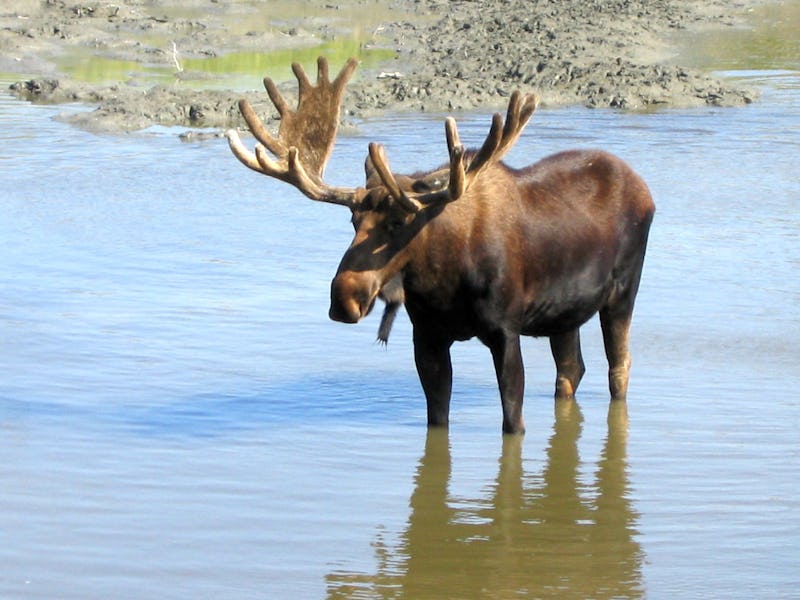Why More Moose? Climate Change Lets Megafauna Retake Alaska and Absolves Hunters
Big herbivores need big plants to munch on.

Bigger shrubbery and warmer temperatures across the Alaskan tundra enabled a dramatic expansion of the moose population over the last century, according to a new study. The paper, published in PLOS ONE, challenges an earlier theory that the absence of moose in northern and western parts of the state over the 20th century was mainly caused by hunting pressure.
Ken Tape, an ecologist with the University of Alaska, Fairbanks, led the study, which used historical temperature data to estimate how tall willow shrubs would have grown back to 1860. The researchers estimate that the plants would have grown about 3.5 feet tall in 1860, compared with 6.5 feet in 2009. The height of shrubbery is important because moose need plants to chew on that is accessible above the snowpack in the late winter. If snow comes up nearly as high as the vegetation, moose populations have little to eat and also have little cover from predators.
Earlier research had attributed the scarcity of moose on the Alaskan tundra to over-hunting by aboriginal groups and miners. The thinking went like this: As aboriginal communities shrank and moved towards the coast because of lowered caribou stocks, moose were driven north. The theory made sense, but it likely wasn’t correct. While reduced hunting pressures may have played a role, taller shrubs over the tundra landscape likely played a much more significant role in the moose territory expansion, the authors of this new study argue.
This maps shows the dramatic colonization by moose of of Alaskan tundra.
It’s hard to overestimate how dramatically Arctic landscapes have changed in a warming climate. Average temperatures in Alaska have jumped three degrees Fahrenheit in 60 years, and twice that in winter months. Permafrost is melting, plants are growing taller, river ice is breaking up sooner. All of these changes significantly impact the ranges and habitats of the birds and mammals that call the Arctic home.
Despite how dramatic these changes have been, there is a paucity of research that demonstrates the impact on wildlife on a large scale, says Tape in a release. “Although scientists have been anticipating changes to wildlife in response to the observed changes climate and vegetation of the Arctic, this is one of the first studies to demonstrate it.”